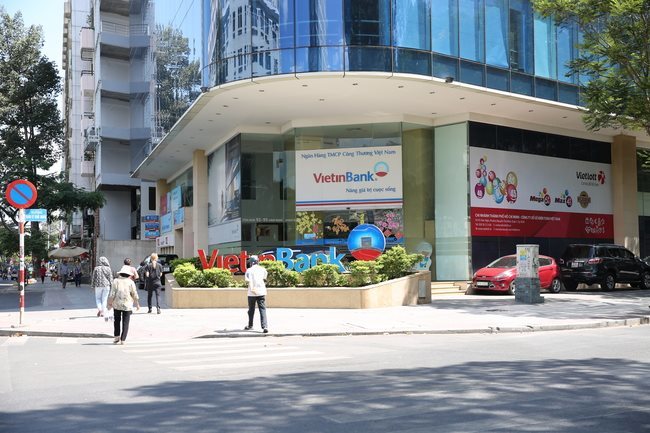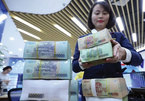 |
|
The office tower of Vietnam Bank for Industry and Trade in District 1, HCMC. The bank obtained permission from the Government to fully retain its earnings for this year
|
“For 2020, capitalization will broadly stabilize, as assets grow at a similar pace to the rate of internal capital generation,” said Rebaca Tan, a Moody’s assistant vice president and analyst, in a statement.
Moody’s pointed out that among 16 rated banks, 13 had adopted Basel II standards in 2019, and all of them already had capital adequacy ratios exceeding 8% as of late last year, the minimum under the new capital rules.
However, among them, State-owned banks and some smaller private sector banks will still need to raise additional capital from markets to support asset growth and bring their capitalization closer to their peers’ levels, according to the agency.
The average ratio of tangible common equity to total assets for rated banks rose to 6.9% at the end of 2019 from 6.2% a year earlier, boosted by fresh capital from foreign investors at two major State-owned banks, Bank for Investment and Development of Vietnam (BIDV) and Bank for Foreign Trade of Vietnam.
Moody’s predicted internal capital generation will cover banks’ asset growth this year. In the case of some State-owned banks, dividend payouts will decrease, which will boost their modest internal capital generation.
Large dividend payouts have historically been a significant drag on State-owned banks’ capitalization. For example, BIDV was required to distribute delayed cash dividends of some 30% of its net income for 2017-2018 to the Vietnamese Government and private shareholders, shortly after the bank raised capital in 2019.
However, there are signs that the Government will not demand large dividend payouts from State-owned banks in 2020 to help them improve capitalization, stated Moody’s.
Early this year, Vietnam Bank for Agriculture and Rural Development and Vietnam Bank for Industry and Trade got the nod from the Government to retain their earnings fully.
Any improvements in asset quality to be limited
While asset quality will continue to be supported by the resolution of legacy problem assets, any further improvements will be marginal as a result of steady formation of nonperforming loans, according to Moody’s.
However, the agency pointed out that prolonged disruptions from the novel coronavirus will lead to increases in these loans for the manufacturing and trade sectors given Vietnam’s heavy exposure and close ties to global supply chains.
Other vulnerable sectors include tourism, aviation, hospitality, retail and agriculture because they rely heavily on China for agricultural exports.
The rapid expansion of retail and small- and medium-sized enterprises’ loans in the past two years is another source of risk because the quality of these loans is largely untested.
“Higher credit growth limits granted to banks under Basel II with good financials could also pose renewed risks to the banks’ asset quality in the long run,” the agency warned.
An increasing number of rated banks have been cleaning up their balance sheets by writing off legacy problem loans. As a result, the average ratio of problem loans to adjusted gross loans at rated banks declined to 4% at the end of 2019 from 5.1% a year earlier, the lowest level in five years.
“As for profitability, the gap will widen between banks that have adopted the new Basel II capital standards and those that have not,” said Tan.
Moody’s expected the State Bank of Vietnam to grant higher limits for loan growth to banks that have adopted Basel II and maintain good financials, as it did select early adopters of the new capital rules in 2019.
The agency explained that the higher growth limits will translate into larger gains in earnings and a wider gap in profitability between stronger banks under the new capital standard and the laggards in 2020.
However, improvements in profitability will slow overall as competition drives up funding costs. The aggregate return on assets rose to 1.2% in 2019 from 1% in 2018.
Moody’s analysis is based on the latest released results of 16 Vietnamese banks, which together accounted for 61% of total banking system assets as of late June 2019. SGT

Covid-19 crisis challenges banks
Some commercial banks have announced lower lending interest rates to help their clients overcome the difficulties caused by coronavirus (Covid-19) crisis.

VN banks’ diversified income sources protect profits amid epidemic
On February 7, the banking sector’s outstanding loans fell by 0.38 per cent for the year, while overdue debts and non-performing loans showed signs of rising.
 Rated banks in Vietnam posted solid profit growth and asset quality improvements last year, benefitting from the country’s robust macroeconomic environment, the U.S.-based ratings agency Moody’s Investors Service stated in a new report.
Rated banks in Vietnam posted solid profit growth and asset quality improvements last year, benefitting from the country’s robust macroeconomic environment, the U.S.-based ratings agency Moody’s Investors Service stated in a new report.